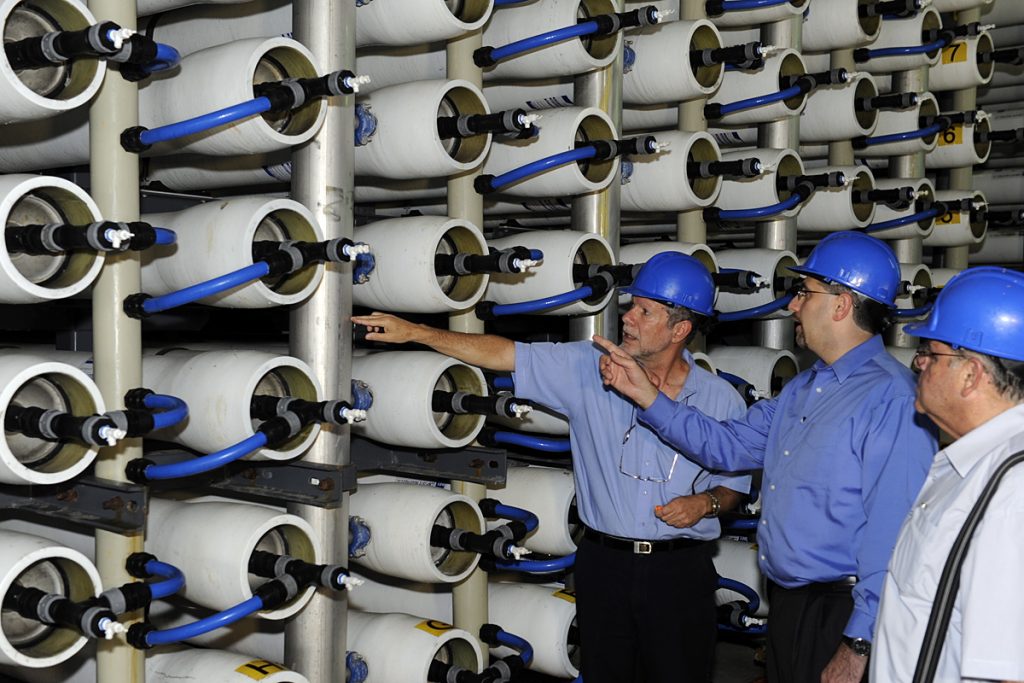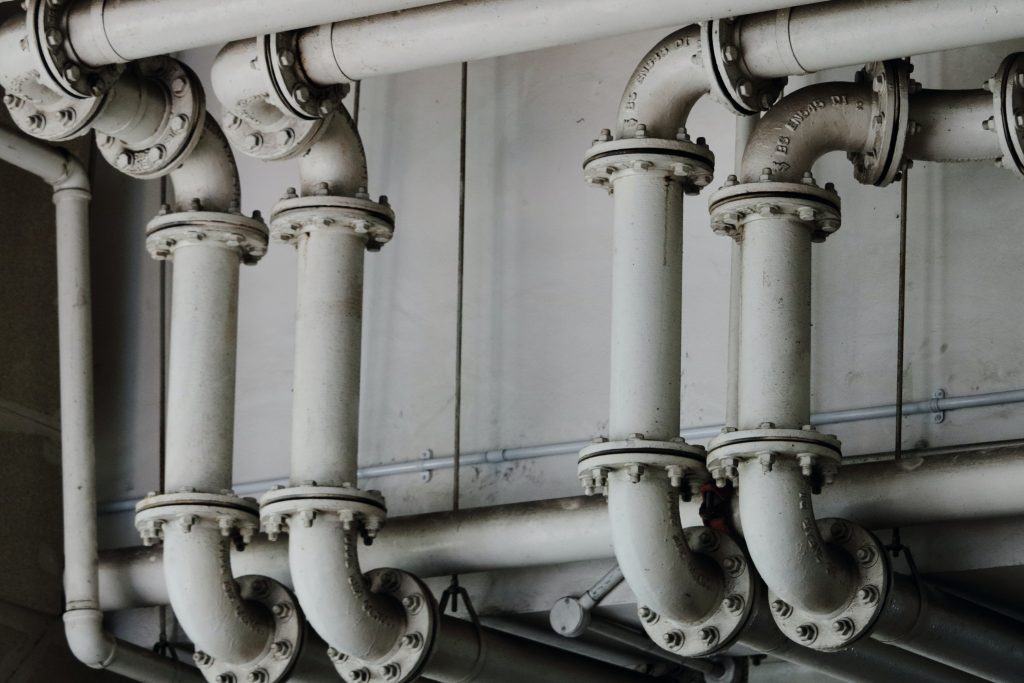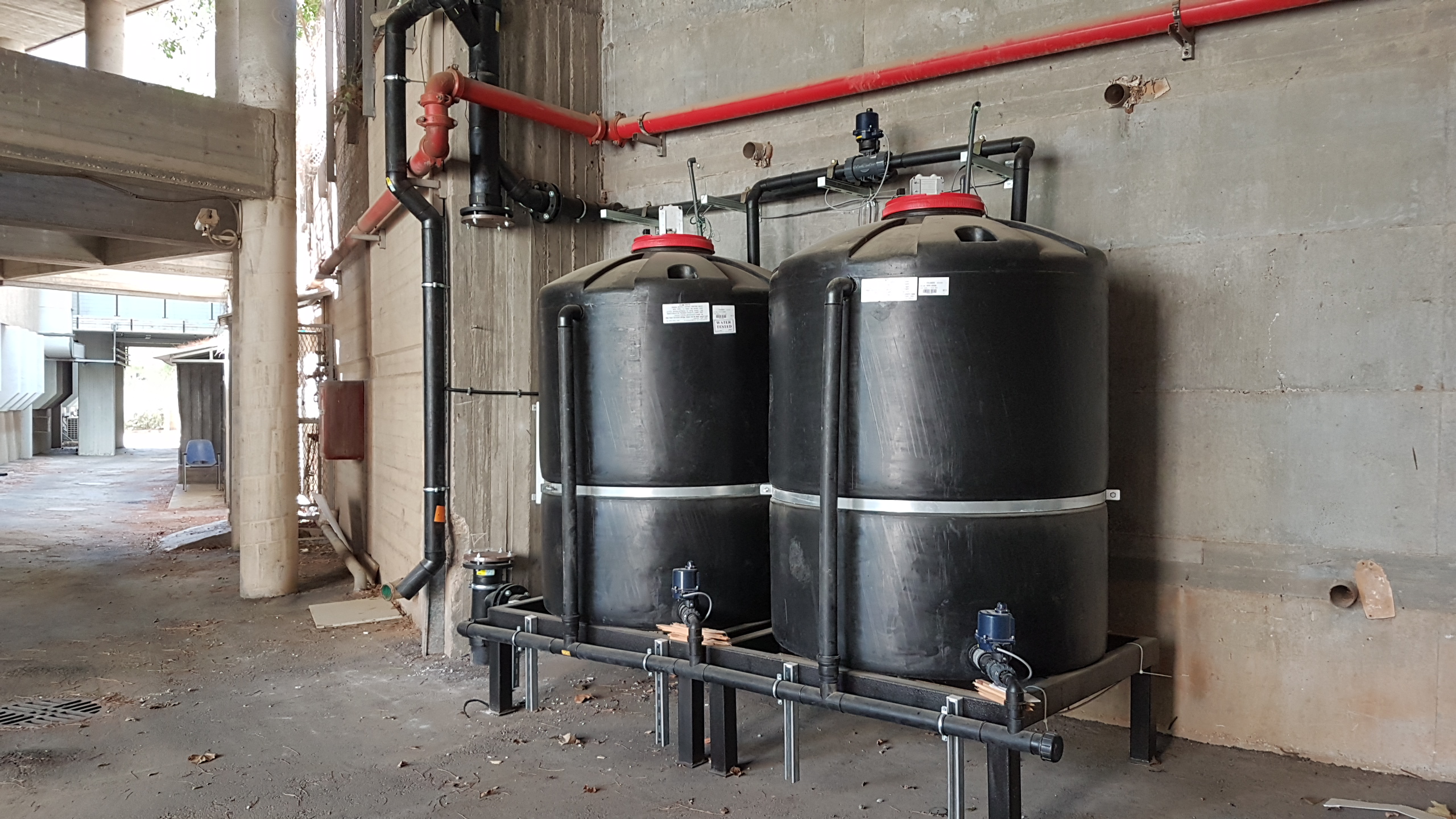The Environmental Tariff of Drinking Water
August 17, 2020A new Israeli study examined the environmental and climatic effects of the country's drinking water, from its starting point, through pipelines and desalination plants, all the way to the end consumer
Israeli water infrastructure has recently made headlines after two water facilities in the Upper Galilee, and the Judean headquarters fell victim to a cyberattack. The attacks followed a more extensive cyberattack on the water supply system last April, which was attributed to Iran.
Even in times without attacks, water scarcity is among the hot topics in Israel, and enormous efforts are being made to provide enough water to the country’s residents, despite the limited natural resources.
However, the essential function of the Israeli water system has a price that the natural world has to pay. A new study examined all the environmental damages caused by the various processes of the drinking water supply system in Israel and found that its ecological footprint is nothing short of significant.
The study, published in The International Journal of Life Cycle Assessment, was conducted in the laboratory of Dr. Vered Blass, a faculty member at the Porter School of Environmental and Earth Sciences at Tel Aviv University, as part of Dr. Noa Miron’s (Stern) doctoral dissertation.
The researchers conducted a first-of-its-kind life cycle analysis of the Israeli drinking water supply system – that is, an assessment of the system’s environmental effects along its entire length, which also included the various sources of drinking water in Israel. In 2015, for instance, one of the years examined in the study, 49 percent of the drinking water in Israel came from groundwater aquifers, 36 percent was desalinated water, and 15 percent were pumped from surface reservoirs (such as the Sea of Galilee).
Every mechanism in the system was examined, from the pumping, the production, and the transportation of the water, to the use of chemicals, as well as the effect of the materials that make up its infrastructure.

250 ml of water = 270 grams of waste
According to the study’s findings, the volume of greenhouse gases released during the operation of the Israeli drinking water supply system in 2015 was 2.3 kilograms per cubic meter of water (with greenhouse gases such as methane normalized as CO2 equivalence – equivalent to the effect of carbon dioxide as a greenhouse gas).
For comparison, this amount is similar to the amount of greenhouse gases released during a 9-kilometer car ride, or in four wash cycles at a temperature of 30 degrees Celsius. This figure is lower than the amount released in countries such as Italy (which stands at 3.4 kilograms per cubic meter of water) and the United States (2.5 kilograms), but also higher than the values in many other places where seawater desalination is not used, such as Romania (1.0 kilogram), Canada (0.2 Kg), or Switzerland (0.2 kg).
In addition, the researchers found that every glass of 250 ml of water produces 270 grams of waste throughout the system’s life cycle.

The price of desalination
The two processes that cause the greatest environmental damage in the Israeli drinking water supply system are the desalination of water and its distribution to the consumers.
According to the study, in 2015, desalination was responsible for 55 percent of the carbon footprint (i.e., greenhouse gas emissions that contribute to the aggravation of the climate crisis) of the system. This is because, in reverse osmosis, the main stage in the desalination process, the water is forced through a membrane at very high pressure (70-65 times the atmospheric pressure prevailing on Earth) that allows only water to pass and leaves the salts behind. The generation of this pressure requires enormous amounts of energy.
During the years examined in the study, there was a significant increase in the share of desalinated water out of all drinking water in Israel: from 22 percent in 2011 to 36 percent in 2015. However, the volume of greenhouse gases emitted as a result of desalination has increased only slightly in those years, from 2.2 kilograms of carbon dioxide per cubic meter of water to 2.3 kilograms.
The reason for that is a decrease in the use of highly polluting fuel oil, and the increase of natural gas instead.
“Although we increased the percentage of desalination from 2012 to 2015, our energy has become cleaner, so the total greenhouse gas emissions per cubic meter of water have not changed substantially, and even decreased slightly,” says Blass.
According to the study findings, it will be possible to further reduce the environmental impacts of desalination if it starts relying more extensively on renewable energies (such as solar energy) instead of fossil fuels.
The study has also found that if renewable energies would fully power reverse osmosis desalination systems, the amount of greenhouse gas emissions fell considerably – from 2.3 kilograms of carbon dioxide per cubic meter of water to 0.3 kilograms.

Greenhouse gases in pipes
During the study, the scientists have established that long-distance flow of water through large-diameter pipes and the help of large pumping stations is what causes 27 percent of the system’s carbon footprint. Short-term water flow through small-diameter pipes, which occurs within cities, is responsible for an additional 15 percent.
The volume of greenhouse gas emissions resulting from the various stages of water distribution in the years tested was 1.2-1 kilograms of carbon dioxide per cubic meter of water.
Additionally, water distribution contributes to the ecological footprint of the system indirectly. The production of iron, for example, which some of the pipes are made of, also causes environmental damage. Another significant impact results from pipe leaks, which alone are responsible for 20-25 percent of the carbon footprint of the drinking water supply system.
According to Blass, renewable energies could greatly reduce the environmental impact of the water transmission phase. “Large water pumping stations and local pumps use huge amounts of energy, and their environmental impact will depend very much on the type of energy with which they are generated,” she says.

Water in big industry
“Research is a fundamental planning tool for the water sector, enabling us to find ways to streamline and reduce the various environmental impacts of the system and understand our situation compared to other countries,” says Blass.
According to her, the data can also be used by various commercial companies that use drinking water as part of their activities and products.
“Until now, when companies like Coca-Cola, for example, conducted analyzes of the environmental impact of the production of their products, they may have used data from another country or some global data – and in many cases, this data is very different from our local data. Now, there is the possibility to use data that is adapted to the situation in Israel.”
Blass emphasizes that the study’s findings illustrate the importance of cooperation between the various government ministries regarding the water economy since many decisions on that subject pertain to different areas.
“This includes, for instance, any decision relating to desalination that affects the energy economy, the issue of water for agriculture or the issue of water for industry,” she says. “One can see the connection between these different areas only when one adopts a life cycle vision,” she adds.
According to Blass, the new study clarifies that the well-known water shortage in Israel is far from being the only environmental challenge of the local water economy.
“Even without regard to scarcity, the water economy has a significant environmental impact, and should be reduced in the most optimal way,” she concludes.
This ZAVIT article was also published in The Jerusalem Post on 08/09/2020.







